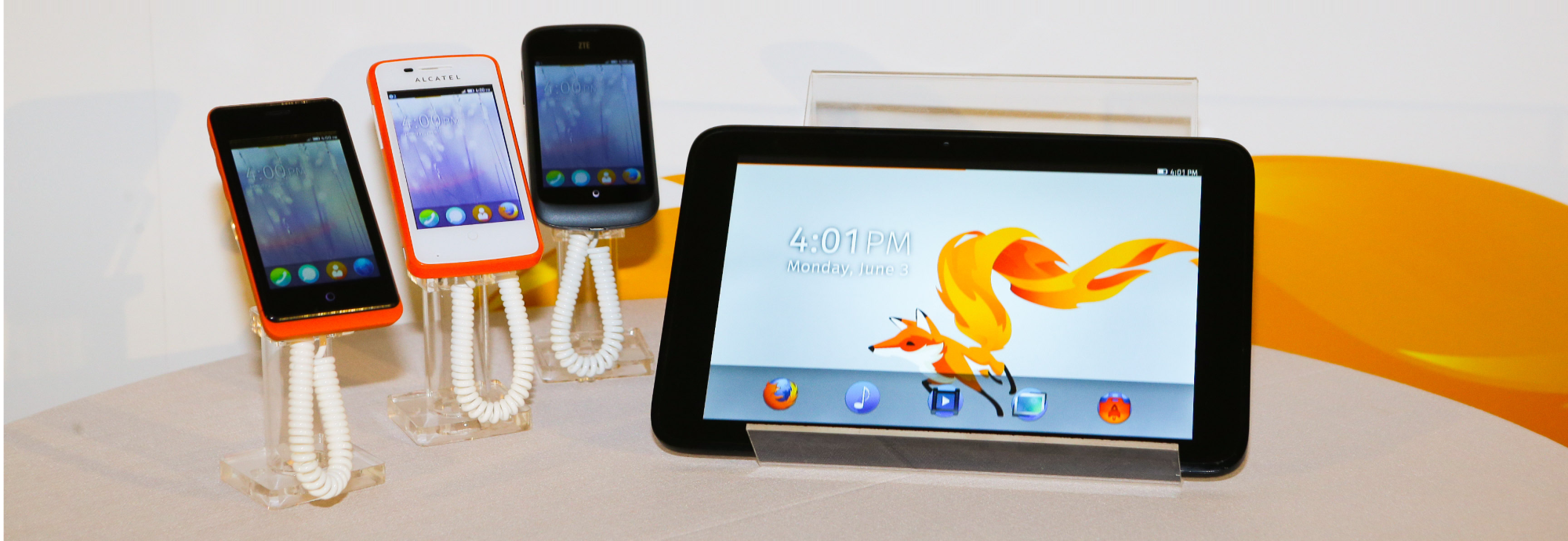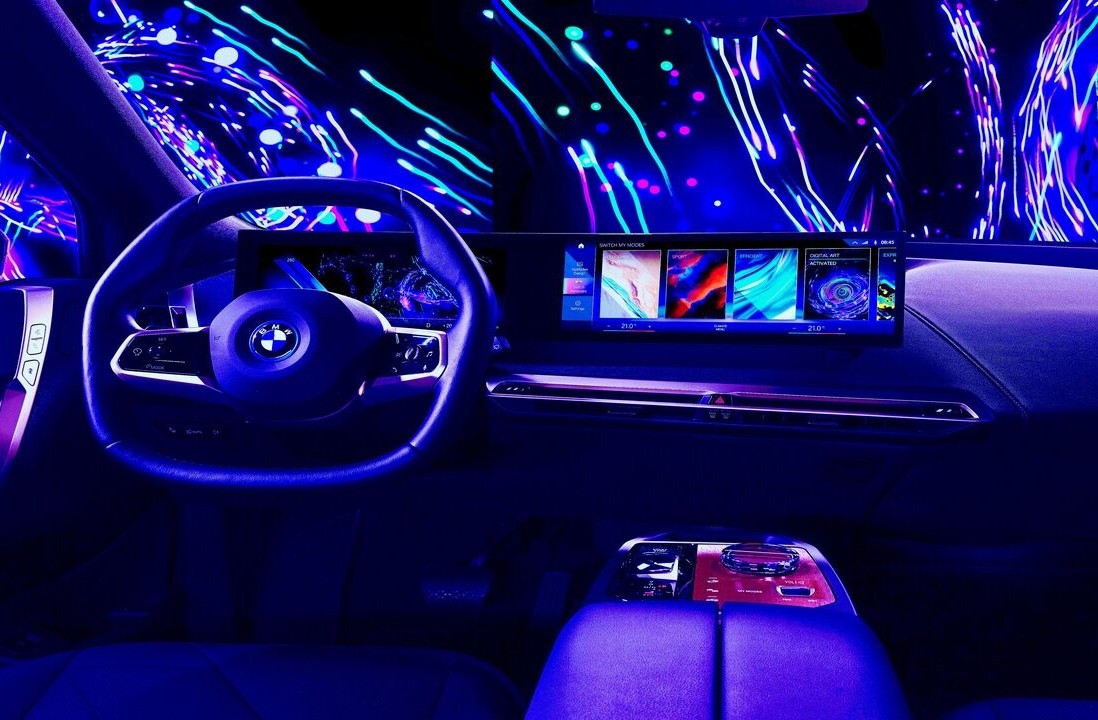
At CES 2014 in Las Vegas today, Mozilla announced its plans for Firefox OS this year. Having launched Firefox OS for smartphones in 2013, the company has now partnered with Panasonic to bring its operating system to TVs, and also detailed the progress that has been made around the tablet and desktop versions.
Firefox OS for TVs
We asked Panasonic why it agreed to go with Firefox OS. “There are no other alternatives that are truly open,” Merwan Mereby, Panasonic’s US Vice President Interactive Content & Services Group, told us.
Mereby elaborated that current options are controlled by either Google or Apple, two major corporations that “hold all the strings.” As such, Android and iOS are not viable options for Panasonic, as the ecosystem is tightly controlled.
With Firefox OS, however, Mereby argues that “anyone can compete”, as you can operate your own marketplace. Not only can Panasonic open up its own marketplace for apps and content, but those who want to build apps and sell content can bypass marketplaces and make their offerings directly to Firefox OS users.
“We are very excited to partner with Panasonic to bring Firefox OS to more people on more platforms,” Dr. Li Gong, Senior Vice President of Mobile Devices and President of Asia Operations at Mozilla, said in a statement. “This new platform enables developers and service providers to create a wide range of applications and services to deliver a new user experience. We see a strong alignment between the visions of Mozilla and Panasonic, and by combining our collective expertise and know-how, we will create amazing products together.”
While the partnership is not exclusive, Panasonic will be the first to release next-generation smart TVs powered by Firefox OS. Mozilla and Panasonic will work together to promote Firefox OS and its open ecosystem on the big screen.
The plan is to leverage existing HTML5 and Web technologies used on PCs, smartphones, and tablets, to provide TVs with more personalized and optimized access to content and services through the Internet. Mozilla’s Web APIs for hardware control and operation will allow TVs to monitor and operate devices, such as emerging smart home appliances, inside and outside of the home.
Basic functions such as menus and programming guides, which are currently written as embedded programs, will be written in HTML5, letting developers easily create applications for smartphones or tablets to remotely access and operate TVs. Mozilla also envisions personalized user interfaces with users’ favorites and new functions for multiple users sharing the same screen.
The fact that Mozilla only managed to get Panasonic on board as a TV partner is telling. Firefox OS for TVs is clearly still very immature. Panasonic may be interested in dipping in a toe (the company wouldn’t even say how many televisions would ship with Firefox OS) while other TV manufacturers are interested in giving it a bit more time before jumping in with both feet.
Firefox OS for tablets
Mozilla is working on a Firefox OS contribution program aimed at accelerating the development of Firefox OS for tablets. The company plans to provide dedicated contributors with access to resources and reference hardware.
Initially, this program will take the form of tablets developed by Foxconn. Back in June, Mozilla had revealed it had partnered with the electronics manufacturing juggernaut to develop at least five devices, including a tablet computer.
Mozilla explains it has to make the hardware available before the software is final. If not, contributors around the world won’t be able to help finalize a build Firefox OS for tablets.
The early specifications for the Firefox OS reference tablet are as follows:
- InFocus 10″ 1280×800 24bit color
- 16GB of storage
- 2GB of RAM
- 802.11 b/g/n
- 267x171x9.7mm and 580g
Dr. Andreas Gal, Vice President of Mobile at Mozilla, says this will be “the first truly open source and openly-developed tablet OS.” Unfortunately, he also said it’s difficult to predict when the first consumer-facing version will be ready.
Firefox OS for desktops
Last but not least, Mozilla wanted to underline how Firefox OS was coming to the desktop. Since the operating system is open source, anyone can modify it. VIA is doing just that: it’s making its own changes to create a more suitable version for the desktop, and Mozilla is bringing those commits back to its own repository.
Furthermore, VIA today announced the availability of APC Paper and Rock, two new devices that offer a preview of Firefox OS running in a desktop environment. Rock is a motherboard which can be inserted into any barebone PC chassis while Paper is a standalone computer with its own case.
Both are targeted at early adopters and developers wanting to help find, file, and fix bugs for VIA’s desktop version of Firefox OS. Paper and Rock are available with the same buildable source codes currently available on GitHub.
Final thoughts
If you thought a non-profit like Mozilla was being ambitious by creating a smartphone OS in a very saturated market, well, that was just the tip of the iceberg. The push to bring Firefox OS to the TV, the tablet, and the desktop is a bold and crazy one.
Frankly, it’s very unlikely that all three of these will take off. Nobody has managed to crack the formula for apps on the TV, the tablet version will be very dependent on the success of the smartphone version, and the desktop release is an even longer shot given the state of the market.
That being said, Mozilla should be applauded for pushing forward with all three, especially because it is able to get so much outside help. Competing with the likes of Apple, Google, and Microsoft in so many areas, and all at once, is simply not a task to go about alone.
Get the TNW newsletter
Get the most important tech news in your inbox each week.






